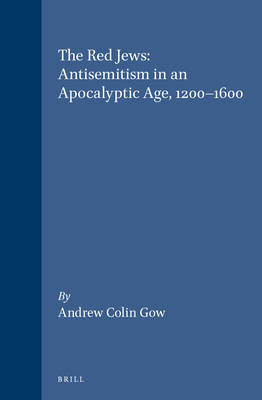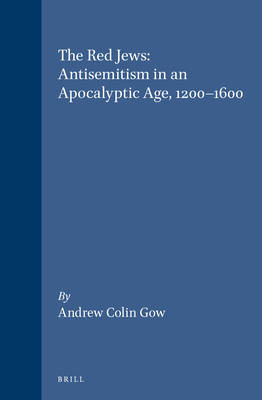
- Afhalen na 1 uur in een winkel met voorraad
- Gratis thuislevering in België vanaf € 30
- Ruim aanbod met 7 miljoen producten
- Afhalen na 1 uur in een winkel met voorraad
- Gratis thuislevering in België vanaf € 30
- Ruim aanbod met 7 miljoen producten
Zoeken
Omschrijving
This book is the history of an imaginary people -- the Red Jews -- in vernacular sources from medieval and early modern Germany. From the twelfth to the seventeenth century, German-language texts repeated and embroidered on an antisemitic tale concerning an epochal threat to Christianity, the Red Jews. This term, which expresses a medieval conflation of three separate traditions (the biblical destroyers Gog and Magog, the 'unclean peoples' enclosed by Alexander, and the Ten Lost Tribes of Israel), is a hostile designation of wickedness. The Red Jews played a major role in late medieval popular exegesis and literature, and appeared in a hitherto-unnoticed series of sixteenth-century pamphlets, in which they functioned as the medieval 'spectacles' through which contemporaries viewed such events as Turkish advances in the Near and Middle East. The Red Jews disappear from the sources after 1600, and consequently never found their way into historical scholarship.
Specificaties
Betrokkenen
- Auteur(s):
- Uitgeverij:
Inhoud
- Aantal bladzijden:
- 432
- Taal:
- Engels
- Reeks:
- Reeksnummer:
- nr. 55
Eigenschappen
- Productcode (EAN):
- 9789004102552
- Verschijningsdatum:
- 1/12/1994
- Uitvoering:
- Hardcover
- Formaat:
- Genaaid
- Afmetingen:
- 167 mm x 244 mm
- Gewicht:
- 911 g

Alleen bij Standaard Boekhandel
+ 448 punten op je klantenkaart van Standaard Boekhandel
Beoordelingen
We publiceren alleen reviews die voldoen aan de voorwaarden voor reviews. Bekijk onze voorwaarden voor reviews.








